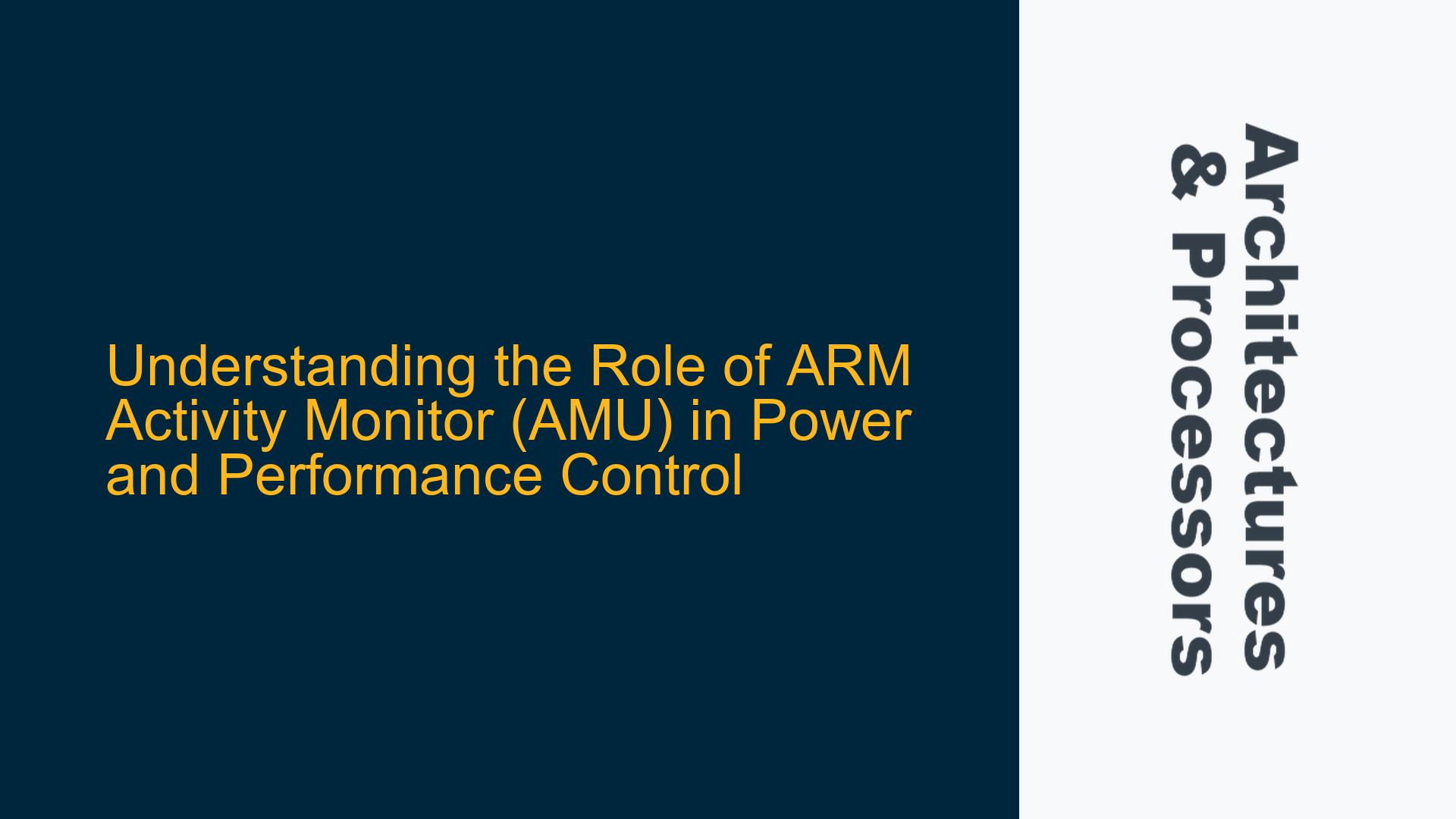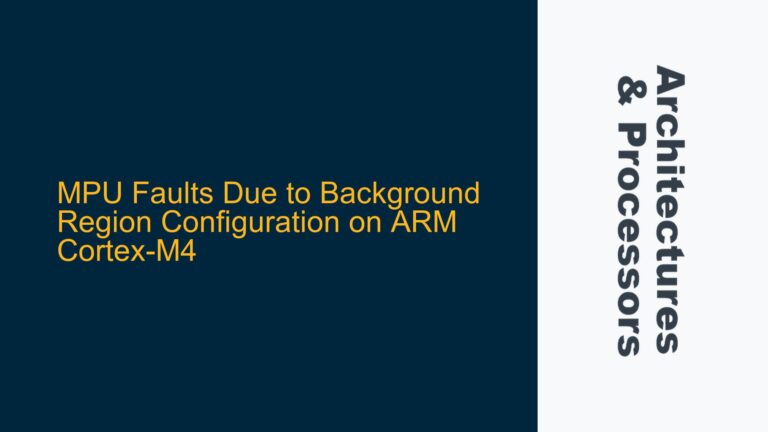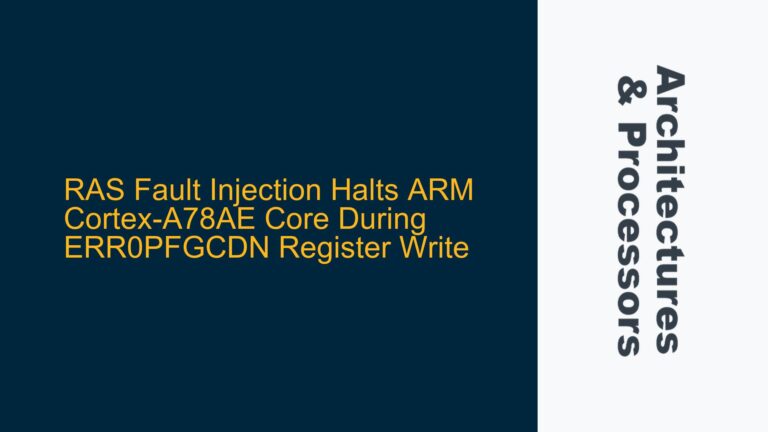ARM Activity Monitor (AMU) vs. Performance Monitor Unit (PMU): Key Differences and Use Cases
The ARM Activity Monitor (AMU) and Performance Monitor Unit (PMU) are both critical components in ARM architectures, particularly in ARMv8.4-A and later. While they share similarities in their ability to count events, their roles, design, and use cases differ significantly. The AMU was introduced to address specific limitations of the PMU, particularly in the context of power and performance management in modern systems. The PMU is a versatile tool for performance analysis, often used by profiling tools like perf to monitor user-space applications. However, its flexibility can become a limitation when multiple entities require access to it simultaneously. For instance, while a profiling tool might use the PMU to count cache misses or branch mispredictions, the operating system (OS) might need to monitor CPU utilization or instruction retirement rates for performance feedback. This overlap can lead to contention, making it difficult to dedicate the PMU to a single purpose. The AMU, on the other hand, is designed as a dedicated resource for system-level performance monitoring, ensuring that the OS always has access to the necessary metrics without competing with other tools or applications.
The AMU provides a fixed set of counters that are specifically tailored for system performance monitoring. These counters are accessible via system registers and the utility bus, making them easier to integrate into the OS kernel’s power and performance management routines. Unlike the PMU, which allows for programmable event selection, the AMU’s counters are predefined, reducing configuration overhead and ensuring consistent access to critical performance data. This design choice makes the AMU particularly well-suited for real-time performance feedback, which is essential for dynamic voltage and frequency scaling (DVFS), task scheduling, and other power management techniques. By offloading system-level performance monitoring to the AMU, the PMU is freed up for other tasks, such as application profiling or debugging, thereby improving overall system efficiency.
Contention for PMU Resources and the Need for Dedicated Performance Monitoring
One of the primary reasons for introducing the AMU is to address the contention for PMU resources in complex systems. In modern multi-core processors, multiple entities—such as the OS, hypervisors, profiling tools, and user-space applications—may need to access the PMU simultaneously. This contention can lead to conflicts, where one entity’s use of the PMU interferes with another’s, resulting in inaccurate or incomplete performance data. For example, if a profiling tool is using the PMU to count branch mispredictions in a user-space application, the OS might be unable to access the PMU to monitor CPU utilization for task scheduling. This limitation can degrade system performance and make it difficult to implement effective power management strategies.
The AMU resolves this issue by providing a dedicated set of counters for system-level performance monitoring. These counters are always available to the OS, ensuring that it can continuously monitor key performance metrics without being interrupted by other entities. This separation of concerns allows the PMU to be used exclusively for application-level profiling and debugging, while the AMU handles system-level monitoring. This division of labor is particularly important in systems that require real-time performance feedback, such as those used in automotive, industrial, and embedded applications. In these systems, even small delays in performance monitoring can have significant consequences, making the AMU’s dedicated resources invaluable.
Implementing AMU for Real-Time Performance Feedback and Power Management
To effectively leverage the AMU for real-time performance feedback and power management, developers must understand its architecture and integration points within the system. The AMU provides a set of fixed counters that monitor key performance metrics, such as CPU cycles, instruction retirements, and memory accesses. These counters are accessible via system registers, allowing the OS kernel to read them directly without additional configuration. This simplicity makes the AMU ideal for integration into the kernel’s power management routines, where low overhead and consistent access to performance data are critical.
One common use case for the AMU is in dynamic voltage and frequency scaling (DVFS), where the OS adjusts the CPU’s voltage and frequency based on current workload demands. By continuously monitoring CPU utilization and other performance metrics via the AMU, the OS can make informed decisions about when to scale up or down, optimizing power consumption without sacrificing performance. For example, if the AMU indicates that the CPU is underutilized, the OS can reduce the frequency to save power. Conversely, if the AMU shows high utilization, the OS can increase the frequency to maintain performance. This dynamic adjustment requires real-time access to accurate performance data, which the AMU provides.
Another important use case for the AMU is in task scheduling. By monitoring CPU utilization and other metrics, the OS can make better decisions about how to allocate tasks across cores, ensuring balanced workloads and efficient resource utilization. For instance, if the AMU indicates that one core is heavily loaded while others are idle, the OS can migrate tasks to the idle cores, improving overall system performance. This capability is particularly valuable in multi-core systems, where load balancing is essential for maximizing efficiency.
To implement the AMU effectively, developers must ensure that the OS kernel is configured to read and interpret the AMU counters correctly. This typically involves modifying the kernel’s power management and scheduling algorithms to incorporate AMU data. Additionally, developers must ensure that the AMU is enabled and configured correctly in the system’s firmware or bootloader. This may involve setting specific bits in the system control registers to enable the AMU and configure its counters. Once the AMU is enabled, the OS can begin using its data for performance monitoring and power management.
In summary, the ARM Activity Monitor (AMU) plays a critical role in power and performance control in modern ARM-based systems. By providing dedicated resources for system-level performance monitoring, the AMU addresses the limitations of the PMU and enables more efficient power management and task scheduling. Developers can leverage the AMU’s fixed counters to implement real-time performance feedback and dynamic voltage and frequency scaling, optimizing system performance and power consumption. To achieve these benefits, developers must ensure that the AMU is correctly enabled and integrated into the OS kernel’s power management and scheduling routines.






